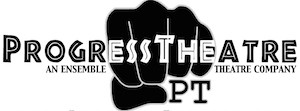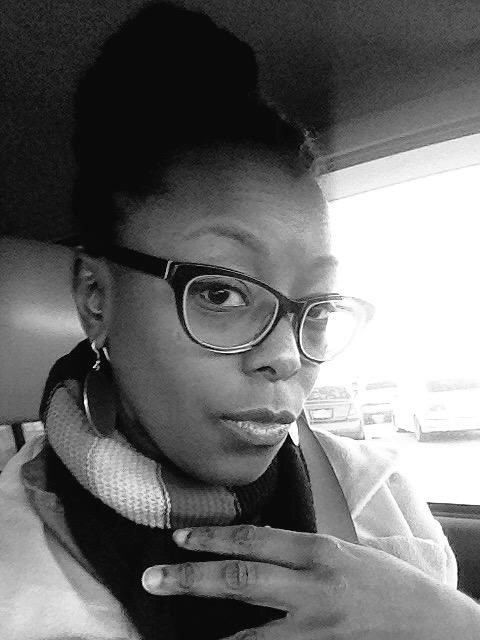Progress Theatre’s “Audience Blog” features responses to live PT performances written exclusively by show attendees we meet on tour.
How did you hear about PT? — I heard about PT through Vicki Meek at the South Dallas Cultural Center. I saw her at the Shine Plays and the implored me to come see The Burnin’. I trust her artistic aesthetic, so I attended without hesitation.
Was this your first PT show? — This was my first Progress show. Yes.
When was the last time you made progress? — The last time I made progress was yesterday when I participated in the 29 Pieces Master PEACE art project with my students. We studied the concept of a virus and contrasted it with being a positive influence. Then, we created art designed to spread positive reminders. This art will eventually hang throughout the city of Dallas.
BURNED
It is Saturday, May 02, 2015. I’m writing this review as all across the country, Black people are protesting in solidarity with other races to the unrighteous life of Freddy Gray and countless other Black lives being taken openly through the authority of violent and racist police brutality. I’m writing this review on the eve of the Floyd Mayweather/Manny Paquiao fight and I want Pacquiao to win. Hillary Clinton has made a bid to be the first White-female President while Waka Flacka has tweeted a bid to be the first Nigga President. Finally, former Olympic gold medalist, Bruce Jenner (who once stood as the essential White man) recently revealed he is transgender. I sat in the South Dallas Cultural Center and witnessed The Burnin’ on Saturday, April 11, 2015. Since that time, I’ve remained thankful to have witnessed the timeliest and unapologetically Black stage production of all American times. I think Dr. Cristal Chanelle Truscott carries the torch Lorraine Hansberry gave to Dr. Ted Shine. This work helped me identify and re-identify with my layers as I swim through the modernism of the post-Civil Rights movement.
Layer one. I’ve seen my share of stunningly written and beautifully produced musical plays meant for the African American audience. Not just this year, but in life. I can now add Progress Theatre’s, The Burnin’ to that list, but it goes way up at the top. This play, about two separate, but similar, juke joint/club burning events in actual history that happened 75 years apart is a time-straddling, cliché exposing, race dismantling social statement that addresses the issues of today’s young. It’s part horrifying and part soothing. At its’ deepest level, The Burnin’ is all love story for every character involved. The ensemble (Carlton Turner, Tiana Kaye Johnson, Rebekah Stevens, Derrick Brent II, and Dr. Cristal Chanelle Truscott) wield and tightrope between these time frames with active sweat and sing-talk while handling costume changes the way Michael Jordan handles a basketball. I found myself in an awe that had long settled comfortable and un-rattled inside me, because although I’ve seen plays that entertain, provoke thought, and incite conversation around Blackness and race, The Burnin’ evoked my Black identity as the narrative of what my survival has looked and sounded like from a generational perspective. It was very personal and it happened very fast.
Layer two. My feet got wet and before I knew it, I was being baptized. The Burnin’ starts out in 1940 and begins in the fictional city of Antebellum, and no matter how many times I read the synopsis notes on the program, nothing prepared me for the entrance of the character, May Belle (Rebekah Stevens) who floats in literally on her White glory complete with Disney-happy voice and privilege. It wasn’t until I heard May Belle speak on the Negroes in her environment that I realized I’m about to see some heavy stage-mojo. For a moment, I thought I was in the wrong place. Playwright/Director/Ensemble member, Dr. Cristal Chanelle Truscott’s decision to create this space of monologue content and introduction to her story using a character like May Belle, really is an ‘on fleek’ moment. It rules. Seeing a post-teen, pre-adult, Antebellum-south White girl, who operated around the Negroes like a trainer with well-tamed lions that actually didn’t mind her felt like a ground-breaker, because a grand handful of Black playwrights (and White ones for that matter) don’t even deal with this particular style of character for she has been found, at best, unnecessary and unexpected in the telling of our narratives. Her role has always been to be just as docile as the Negroes or as violent as the racists. Always protected and saved from society, May Belle finally gets some say in her participation in the matter of definition in the race story.
Layer three. I loved having my adrenaline exercised and my intelligence un-insulted. I loved the audacity of Cristal Chanelle Truscott to write a brave piece of ‘get your money’s worth.’ I feel like anyone who sees this production will know how they stand in the race game of life and not just where. I found myself in characters such as Topper Sr., (Derrick Brent II) who seemed like the Zeus of slave-landscapers that specialized in climbing tall trees, knowing weak branches from the strong ones, and able to do fast and quick jobs. However, because it’s heavy Jim Crow playing in the backdrop, Truscott is also exposing a possibility on how the Blackman as monkey stereotype continued to evolve. Truly, this narrative is what Black Excellence looked like, in the post Booker T. Washington era when segregation was in full-bloom and unquestioned. Topper Sr., was a bad ass. The best at his craft and respected by most. His son, Topper Jr. (Derrick Brent II) was his legacy and like his father was great at his craft, but unlike his father, was ready to leave his surroundings and be something better than a tree-climber. It resonated as I can remember joining my grandmother on trips to clean houses for White women and how I knew I wasn’t and couldn’t be about that life – no matter how strong the legacy. It was a gut-wrenching revelation. I also understood how this mentality has birthed a generation that carries no response-ability to that life. The family business for Blacks has been re-directed, which has shaped Black economics. The Burnin’ attempts to give logical reasoning to how characters such as Topper Jr. ultimately became the hoodlum rapper-rebel lover-boy through his own dismantling of how the world is to see and accept him.
Layer four. The reality of the experience of seeing The Burnin’ galvanized my race-based sensibilities by keeping it real at all times. The work is also musical, which only adds to my admiration and appreciation of the experience. Neo-Spiritual. Acapella. Emotional. There is soothing and healing in the way these stories are sung. The use of voice call and response is primal coming from a tradition whose rhythms, blues and soul influence as distinctly Black in America and can’t be denied. This testimony is only a fourth of the observations and revelations I walked away with.
Layer five. Dr. Truscott is serious about providing experiences that promotes the imaginative exploration of creating believable narratives explanations of how we got to here. The Burnin’ is life. This play lit a fire in me that I was happy to have lit. I consider Dr. Truscott as a modern day Oshun of African-American playwriting.
< strong>Camika Spencer teaches 7th grade Creative Writing. She is a published author, playwright, poet, and activist living in Dallas, Texas. She is a house member of Soul Rep Theatre and is front woman for the Soulternative band, Emotion and the Cosmos. She can be found on-line under the moniker @emotionbrown or at www.emotionbrown.com

